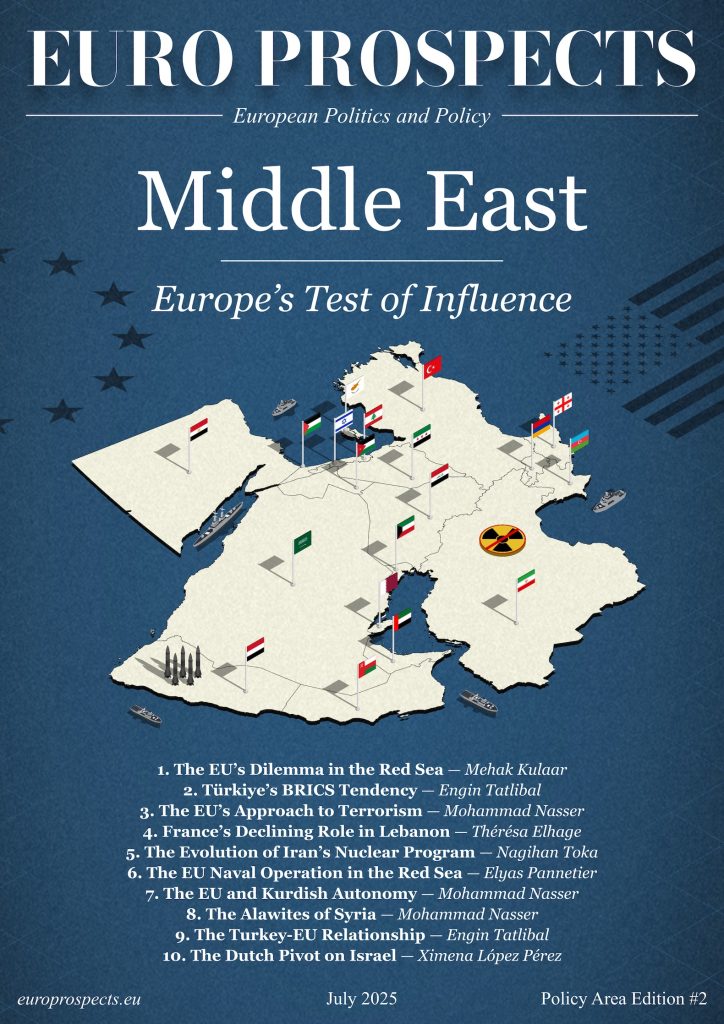~30 min read — Long-Form | Serbia | Protest | Corruption | Geopolitics
“Blood on Their Hands”: Uncovering Serbia’s Railway Station Tragedy
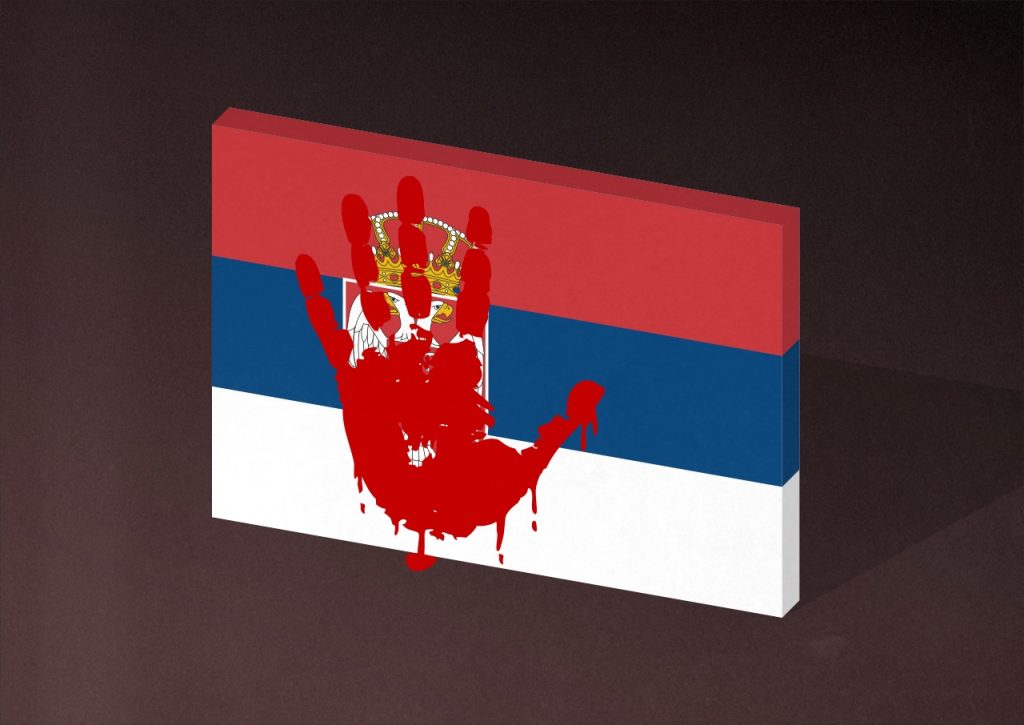
By Maja Vujović — Correspondent for Serbia
Edited/reviewed by: Aleksander Dragic | Francesco Bernabeu Fornara
February 1, 2025 | 20:00
- A Normal Day Turns Deadly
- A Tragedy Reportedly Marked by Corruption and Neglect
- Doesn’t Resign: Prime Minister Travels to Shanghai
- Resigns: Minister of Construction
- Resigns: Minister of Internal and Foreign Trade
- Resigns: Director of Serbian Railway Infrastructure
- 13 People Arrested, Including Former Minister
- Tanasković Accuses Vesić (Contstruction Minister) and Vučić (President)
- Novi Sad Court Blockade
- Released From Custody: Vesić (Contstruction Minister)
- Erasing Evidence to Avoid Accountability
- Chinese Contractor and Railways of Serbia Claim the Canopy Was Not Reconstructed
- Who Was Responsible For Project Supervision?
- Controversy Around Subcontractor Company “Starting”
- Local Engineers’ Opinions and Analysis
- Shifting Blame to the Chinese
- Republic Construction Inspector Identifies Violations
- Chinese Response To Inspector’s Order
- Non-Existent Occupancy Permits
- Playing Hide and Seek With the Documentation
- Vučić Gains Access to Sealed Documents
- Opposition Files Criminal Complaints
- Protests Erupt
- Government’s Authoritarian Response
- Exaggerated Damage Costs
- President Vučić’s Late Visit and Ongoing Denial
- Varadin Bridge Blockade: Students + Their Parents
- 15 Minutes for 15 Lives
- Attacks On Protesters Start
- Students Take Over Protests
- School Students Join Protests, President Closes Schools
- School Students Under Attack
- Vučić Publicly Threatens Students
- Government Gives The Middle Finger (Literally)
- “Loyalists”: Scare Tactic or Paramilitary Formation?
- BIA Spying on Activists and Families
- General Strike and Protests Throughout Serbia
- President Organizes Counter-meeting
- Incidents Occur During Strike Protests
- Vehicular Assault in Belgrade
- Dog Hit-And-Run Murder In Novi Sad
- Animal Cruelty Intimidation in Novi Sad
- Support For Students Keeps Growing
- “3 Bridges For 3 Months” Blockade
- Further Resignations
- Resigns: Prime Minister
- Resigns: Mayor of Novi Sad
- Students’ Response
- EU Commission Seeks Reports on Student Attacks
- Government’s Attempts to Bribe Students
- Better Conditions For Apartment Purchase
- President Calls For Discussion Regarding Students’ Demands
- Tuition Cuts
- Pardoning Arrested Protestors
- Students Demand Action From Public Prosecutor
- Serbian Students Nominated for Nobel Peace Prize
- Scandalous Statements From the Ruling Politicians
- Calls for Justice Amidst a Climate of Fear
1. A Normal Day Turns Deadly
In what should have been just a regular day at the Novi Sad railway station, an ordinary morning turned tragic as a massive concrete canopy came crashing down on unsuspecting passengers. In an instant, 14 lives were lost, including a six-year-old girl. There were initially three survivors, aged between 18 and 24, who were left severely injured with life-altering injuries, having to undergo amputations due to the severity of their injuries. Unfortunately, after a month-long battle, one of the three survivors succumbed to her injuries, bringing the total number of lives lost to 15. The two survivors are still hospitalized.
Families of the victims, their friends, college peers, and supportive and worried citizens have been calling for accountability, not only from the officials directly responsible for the station’s construction and supervision but also from top government figures, whom they hold directly responsible. This tragic incident shines a spotlight on a broader crisis in Serbian infrastructure, with citizens pointing to similar safety risks across the country. As public infrastructure projects continue to be a source of financial gain for a select few, many worry that more lives may be at risk.
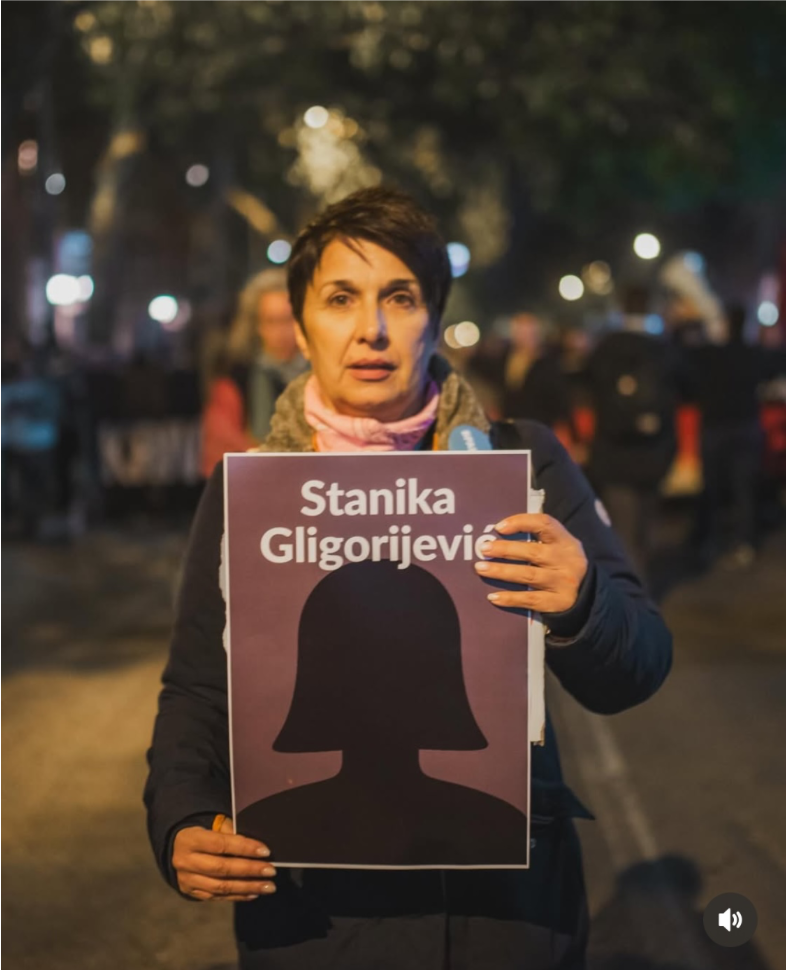
A Tragedy Reportedly Marked by Corruption and Neglect
The collapse of the recently renovated railway canopy in Novi Sad exposed the dangerous intersection of corruption and secrecy in government-backed infrastructure projects. The Novi Sad railway station was renovated twice in recent years—as part of a broader modernization project for the Belgrade-Budapest high-speed rail line. Witnesses described the canopy’s sudden crash as horrifying, while relevant professionals noted it could have been prevented with proper oversight and quality standards. Critics argue that this omission reflects a common issue in state-funded projects, where oversight is often weak, and budget cuts lead to incomplete or shoddy work.
Instead of Resigning, Prime Minister Travels to Shanghai
While Novi Sad mourned the victims of the railway station tragedy by lighting candles, Serbian Prime Minister Miloš Vučević chose to travel to Shanghai. His apparent priority was to mitigate public outrage against the Chinese companies involved in the station’s reconstruction. Many believe that Vučević should have instead offered his resignation, given his roles as Prime Minister, head of the ruling SNS party, and former long-time mayor of Novi Sad.
Minister of Construction Resigns Instead
Serbia’s Minister of Construction, Transport and Infrastructure Goran Vesić announced his resignation two days after the tragedy, amidst escalating public pressure, though he denied any personal responsibility for the disaster.
He served as the Minister of Construction, Transport and Infrastructure from 2022 to 2024. As a member of the Serbian Progressive Party, he was a member of the National Assembly of Serbia from 2001 to 2004 and briefly in 2022. He also served as the deputy mayor of Belgrade from 2018 to 2022.
Minister of Internal and Foreign Trade Resigns Next
Tomislav Momirović who served as Minister of Internal and Foreign Trade from 2022 to 2024 handed in his resignation. As a member of the Serbian Progressive Party, he previously served as Minister of Construction, Transport and Infrastructure from 2020 to 2022. From October 2022 until his resignation, he led the Ministry of Internal and Foreign Trade under Prime Minister Ana Brnabić, and he continued in the role in May 2024 under the government of Miloš Vučević.
The Novi Sad railway station has been renovated twice in recent years, with Momirović overseeing the Ministry of Construction during the first renovation in 2021, under former Prime Minister Ana Brnabić, who is currently the President of the National Assembly.
Director of Serbian Railway Infrastructure Resigns As Well
On the same day, Jelena Tanasković, the acting director of Infrastructure Railways of Serbia, resigned. She had held the position since May 2024. As a member of the Serbian Progressive Party, she was previously the Minister of Agriculture, Forestry, and Water Management. From 2020 to 2022, Tanasković served as State Secretary in the Ministry of Environmental Protection. She also held the same position in the Ministry of Finance from 2018 to 2020. Additionally, she was the Secretary for Finance in the City of Belgrade starting in 2017.
Momirović and Tanasković resigned on the same day when opposition national and provincial deputies in Novi Sad blockaded the courthouse and prosecutor’s office, protesting the slow pace of the judicial system in determining accountability for the tragedy.
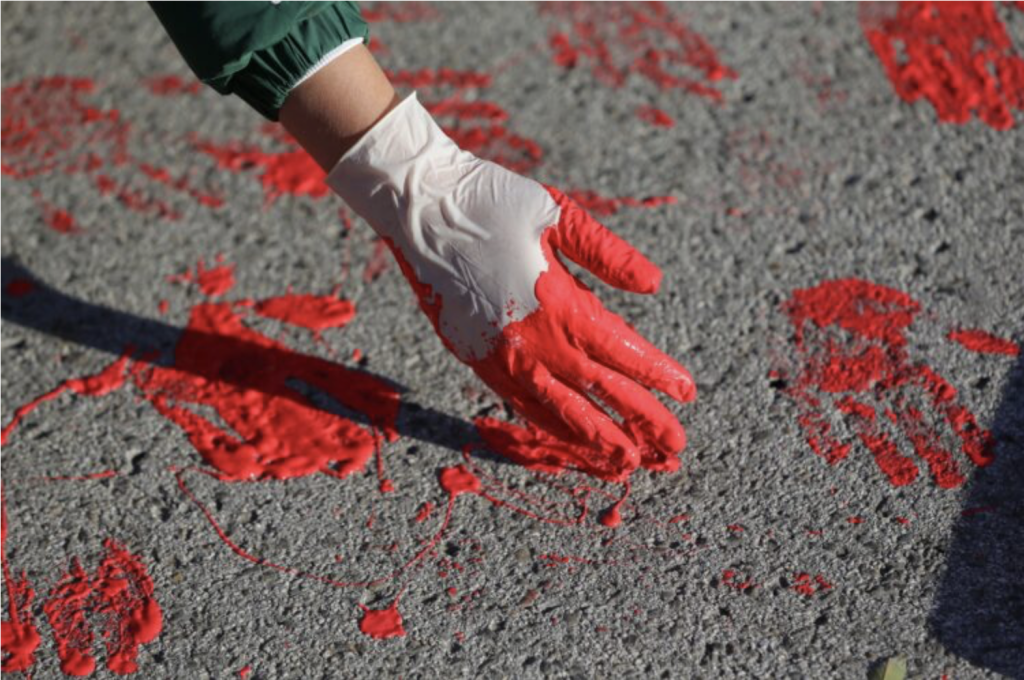
3. 13 People Arrested, Including Former Minister
The Higher Public Prosecutor’s Office (VJT) in Novi Sad announced the arrest of 13 suspects, in connection with the tragedy near the Novi Sad Railway Station that claimed 15 lives.
Goran Vesić, the Minister of Construction, and Jelena Tanasković, the acting director of Serbian Railway Infrastructure, were arrested in connection with the deadly Novi Sad tragedy, together with Anita Dimoski, Assistant Minister for Railway Transport and Nebojsa Šurlan, Former director of Serbian Railways Infrastructure. Three weeks after the incident, in which 15 people were killed, they face charges related to causing general danger. While Vesić claimed he voluntarily went to Novi Sad upon the police’s invitation, the charges relate to endangering public safety.
Vesić and Šurlan were placed in 30-day detention, while Tanasković and Dimoski were placed under three months of house arrest with electronic monitoring. So far, 13 individuals have been apprehended in this case.
Tanasković Accuses Vesić and Vučić
The former director of Serbian Railways Infrastructure, Jelena Tanasković, shifted full responsibility for the Novi Sad Railway Station project onto former Minister Goran Vesić during her testimony to the prosecutor. Tanasković claimed in her statement that Vesić insisted on managing all projects, allegedly based on an agreement with the Serbian President Aleksandar Vučić.
“Minister Vesić told me that the only condition for me to be the director of Serbian Railway Infrastructure was to accept that he would have absolute control and manage all projects, as he had allegedly agreed with the president that all projects would be handled exclusively in that manner,” said Tanasković.
4. Novi Sad Court Blockade
Opposition MPs and activists blockaded the entrances to the court and prosecutor’s offices in the northern Serbian city of Novi Sad, demanding a thorough investigation into the November 1 tragedy.
The blockades persisted for several days and were met with police force, despite the protesters being members of the Parliament (MPs) with parliamentary immunity. They claimed that the entire court system of Serbia was already blocked and not doing its job, so they decided to physically block it as well.
They demanded the release of arrested protesters and the arrest of those responsible for the deaths of the 15 people. Additionally, they called for the detained former Minister of Construction, Goran Vesić, who had resigned from his position, to be denied the right to defend himself while at liberty.
They also demanded justice for a senior protester (74) who was brutally beaten by the police, resulting in doctors having to amputate one of his testicles.
Members of the opposition were heard yelling at police officers who were physically attacking them: “Haven’t you had enough bloodshed?”.
On November 27th, members of the ruling coalition in Serbia passed 34 laws in one day, including the 2025 Budget Law, the final account for the previous year, and a law allowing the construction of nuclear power plants. These laws were adopted without debate, which was blocked the previous day by the Speaker of the Assembly, following incidents between the ruling coalition MPs and opposition members. Some suggest it may have been intended to shift media attention away from growing outcry over the Novi Sad tragedy.
Vesić Released From Custody — No Substantial Evidence
Goran Vesić, arrested following the Novi Sad tragedy, began a hunger and thirst strike after being detained for 30 days, signaling his resistance to taking criminal responsibility. His party colleagues defended him, claiming the prosecution was part of a political plot. Meanwhile, the Serbian Assembly stripped Vesić of his immunity for prosecution. President Aleksandar Vučić expressed support for Vesić, calling him a friend and questioning the detention decision, stating that Vesić had not attempted to hide or influence witnesses.
The court released Goran Vesić from detention after only 6 days, citing insufficient evidence to link his actions to the tragedy. The prosecutor failed to prove a reasonable connection between Vesić’s omissions and the incident.
Former director of Serbian Railways Infrastructure, Nebojša Šurlan’s detention has been extended for 30 days.
5. Erasing Evidence to Avoid Accountability
In a shocking response, officials swiftly removed all evidence of the canopy collapse from the site just hours after the incident, erasing crucial proof that could have shed light on construction flaws. Key evidence—including the canopy and pillars—was discarded at Novi Sad’s marshalling yard and dismissed as mere debris, according to MP Marinika Tepić. At the same time, state officials started claiming the canopy hadn’t been part of the renovation, directly contradicting prior information. The government attempted to shift blame to outdated construction from 60 years ago during the era of Yugoslavia’s leader Tito, despite evidence that the canopy had undergone renovations.
Chinese Contractor and Railways of Serbia Claim the Canopy Was Not Reconstructed
The contractor for the station’s reconstruction, Chinese consortium CRIC-CCCC, consisting of China Railway International Co. Ltd. and China Communications Construction Company Ltd., after the incident, claimed that the collapsed concrete canopy, which occurred on November 1, was not part of the reconstruction work and that all work was done according to the approved building permit. Infrastructure Railway of Serbia also confirmed that the canopy was not reconstructed during the process.
Who Was Responsible For Project Supervision?
The Hungarian company Utiber, overseeing the Novi Sad-Subotica railway reconstruction, issued a warning to the contractor CRIC-CCCC, after the station canopy collapse killed 15 and critically injured 2. They said that without access to the 1964 project plans, Utiber couldn’t ensure roof safety and advised halting Wing B operations. Journalists’ attempts to contact Utiber’s Novi Sad office led to denial of affiliation by the respondent.
According to documents obtained by journalists, the French company Egis was actually responsible for supervising the reconstruction of the Novi Sad railway station building. While the Hungarian firm Utiber was frequently mentioned in public, both officially and unofficially, it was not overseeing this part of the project.
Controversy Surrounding Subcontractor Company “Starting”
“Starting DOO” was one of the subcontractors involved in the reconstruction of the Novi Sad railway station. A geological engineer, Zoran Đajić, who oversaw stone materials for the project, stated that he had raised concerns about irregularities but was pressured by “Starting” to approve work as they wanted. He found it unusual that he was hired directly by “Starting” rather than the responsible ministry or state railway infrastructure company. The firm overseeing the project, “Utiber,” failed to act on his reports.
“Starting” has secured multiple high-value government contracts since 2014, including work on the University Clinical Center of Serbia, major road infrastructure projects, and the controversial “Belgrade Waterfront” development. The company has financial and ownership ties to firms like “Ras Inženjering,” which has been linked to state-favored contracts. The firm’s involvement in the railway station collapse, which killed 15 people, has raised serious concerns, especially given reports of secretive contracts with Chinese companies and a lack of transparency in oversight.
6. Local Engineers’ Opinions and Analysis
A geological engineer, Zoran Đajić, who worked on the reconstruction of the railway station building in Novi Sad until March 2023 explained that during politicians’ visits, work was rushed to make everything appear in order. “It happened several times that the work we had already completed was torn down and redone a few days after the visits. So, there were several positions where the work was repeated two or three times, and, of course, it was billed two or three times as well.”, he said.
Đajić stated that construction work was indeed performed on the canopy, refuting Minister Vesic’s and CRIC-CCCC’s claims. He emphasizes that in his reports sent to numerous authorities, he recommended removing the marble panels from the building facade to inspect the foundation behind them. He documented instances where concrete was missing, replaced instead by crumpled cement bags to reduce the amount of concrete used. He outlines that the canopy lacked support columns and relied on corroded anchors. He mentions writing reports in early 2023, requesting structural repairs that were ignored. Officials prioritized superficial improvements, such as painting the structure before high-profile visits. He emphasizes that these failures point to negligence by various authorities, including past and current ministers, and expresses regret for not insisting more forcefully on addressing these structural issues.
Civil engineer Andrijana Milovanović pointed out the absence of any licensed engineer for construction, noting the lead designer, who approved the project, only held a license 315, which is for roads and railways.
Milovanović claims regulations were manipulated to favor investors, allowing unqualified individuals to approve projects for a small fee. She stresses the need for a licensed structural engineer with a 310 license for complex calculations, stating that the project lacked proper documentation, including Section 2 of Serbia’s Planning and Construction Law. She believes the canopy was poorly designed and unsupported, suggesting it collapsed due to a sudden overload or interference during reconstruction. Milovanović offered her expertise to investigate the tragedy.
7. Trying to Shift the Blame to the Chinese
A Chinese construction company CRIC-CCCC, heavily contracted by the Serbian government, was responsible not only for the Novi Sad station but also two additional high-risk rail projects in Belgrade and Subotica. They are also building a tunnel through the Fruška gora mountain near Novi Sad. The public, meanwhile, is barred from accessing documentation on these projects, leading many to suspect cover-ups of systemic failings—terrified citizens of the possible future tragedies.
Chinese companies, serving as contractors for the reconstruction of the Novi Sad Railway Station, claimed in June, just before the station’s reopening, that they had “completed the work necessary to ensure the safe movement of passengers” when submitting their request for the handover of Wing B. This statement was later confirmed by a commission established by “Serbian Railway Infrastructure.”
Republic Construction Inspector Identifies Violations
On November 1, the Republic Construction Inspector, an official who oversees compliance with national construction laws and regulations, conducted an on-site investigation following the collapse of the station canopy in Novi Sad, identifying two violations.
First, no measures were taken to prevent or eliminate immediate danger to public safety. Second, there was no quality control of the construction work or adherence to regulations and standards.
As a result, the inspector ordered a ban on using Wing B of the station and mandated the investor (Serbian Railway Infrastructure) and contractor (Chinese company CRIC) to verify the structural stability of the building. This assessment was to be conducted by a third party unconnected to the original project. The parties were given 15 days to comply, and on November 14, Serbian Railway Infrastructure instructed the contractor to carry out the mandated stability check.
The Chinese Respond To The Inspector’s Order
Less than 20 days after the tragedy in Novi Sad, the Chinese contractors, CRIC and CCCC, sent a letter to Serbian Railway Infrastructure, reminding them that they had previously warned about the age of stations along the Novi Sad–Subotica route. They suggested assessing the usability and durability of these stations.
On November 23, the Chinese contractor CRIC responded to an order to verify the Novi Sad station’s structural stability, citing the railway reconstruction contract to the Hungarian border. They referred to Article 61, stating their responsibility ended when the station opened on July 5, marking the handover. Under Article 63, they argued modifications by the supervisory body apply only before handover. CRIC emphasized structural checks were outside the contract’s scope and noted the inspector mandated a third party to perform them. While disputing the order’s validity, they expressed readiness to cooperate with authorities.
Non-existent Occupancy Permits
Serbia’s ongoing reliance on opaque international deals has exacerbated public frustration. Belgrade’s newly built railway station also shows signs of deterioration, pointing to widespread negligence in construction standards and prompting the opposition to demand that independent professionals verify the safety of ongoing projects. The opposition obtained official government documents showing that both the Belgrade railway station and the Novi Sad railway station had been denied occupancy permits. President Vučić was aware of this but concealed it from the public, opening the stations regardless and assuring citizens of their safety.
On January 20th, the Serbian Railway Infrastructure submitted a new request for an operational permit for the station building within the “Belgrade Center” Railway Station complex. In early October, the Ministry of Construction rejected Infrastructure’s initial request for the permit, deeming it incomplete. They submitted the request again, even though no apparent additional work has been done in the meantime.
8. Playing Hide and Seek With the Documentation
A local news portal requested from the Ministry of Transport and SOE “Infrastructure Railways of Serbia” to provide contracts and invoices related to this project. Instead of the documentation, the Ministry replied that they had “contacted the Chinese contractor” who informed them that they “do not agree to share any contract-related data with third parties before the completion of the project or until the confirmation of a job well done.” The Ministry also provided the portal with a letter from the contractor, the Chinese consortium CRIC-CCCC. In the letter, signed by Di Fengzan, a representative of this consortium, it states that they do not agree to share data with third parties, including the portal’s journalist.
The design documentation for the railway renovation in Novi Sad was removed from CEOP. Just hours after the canopy collapse, all documentation was allegedly pulled from the APR CEOP portal, and Serbian engineers no longer have access to it, which is a precedent and illegal.
The vice president of the Freedom and Justice Party and Member of Parliament, Marinika Tepić, asked whether it is true that several hours before the tragedy in Novi Sad, the head of the railway station in the city, was informed that five people had complained about gravel falling from the top of the ceiling above the canopy. Just a day before the tragedy, on October 31, CIP, the company responsible for the station building reconstruction project, took a photograph revealing visible damage on the canopy.
Vučić Gains Access to Sealed Documents
The President of Serbia, Aleksandar Vučić, presented the documentation for the reconstruction of the railway station and announced its public release. However, according to Stevan Babić, the head of the Kreni-Promeni parliamentary group in the Novi Sad Assembly, the release of this documentation has been officially prohibited by the Ministry of Construction, Transport, and Infrastructure due to the potential threat it poses to the investigation and criminal proceedings.
The Serbia Center Party (SRCE) called on the Supreme Public Prosecutor, Zagorka Dolovac, to clarify how President Aleksandar Vučić obtained the documentation on the reconstruction of the Novi Sad railway station. They questioned why this documentation, which should have been in the Prosecutor’s Office, was accessible to him, who authorized his access, and what actions will be taken in response.
In response to the release of documentation by the Serbian government, the Faculty of Civil Engineering in Belgrade announced in December, following a detailed analysis, that key documents were missing from the released documentation. The same faculty issued a new statement at the end of January highlighting which additional documents are still missing.
Opposition Files Criminal Complaints
Savo Manojlović, a leader of the opposition political party Kreni-Promeni and vocal critic of Serbia’s government headed President Vučić, said: “We filed the first criminal complaint against unknown persons so that the competent prosecutor’s office could determine who the responsible individuals are.” said Manojlović.
“The second criminal complaint is being filed against Aleksandar Vučić, Ana Brnabić, and Miloš Vučević—they are the main generators of corruption in construction.” he continued.
“We conducted a cost analysis. The railway costs €65 million, but based on our calculations, it is impossible for it to cost more than €20 million. The figures are grossly inflated, and this is something happening throughout Serbia. This is the purpose of projects like Expo and the National Stadium, which cost €1 billion, even though a similar stadium in Bilbao cost about €200 million.” Manojlović explained.
He further stated: “This creates an environment of corruption where standards do not have to be respected. The solution does not lie in resignations, as that will not address the deeper problem. Instead, we need to implement the Romanian scenario led by prosecutor Laura Kövesi—everyone from the former or current government who is a generator of corruption must be held accountable.”
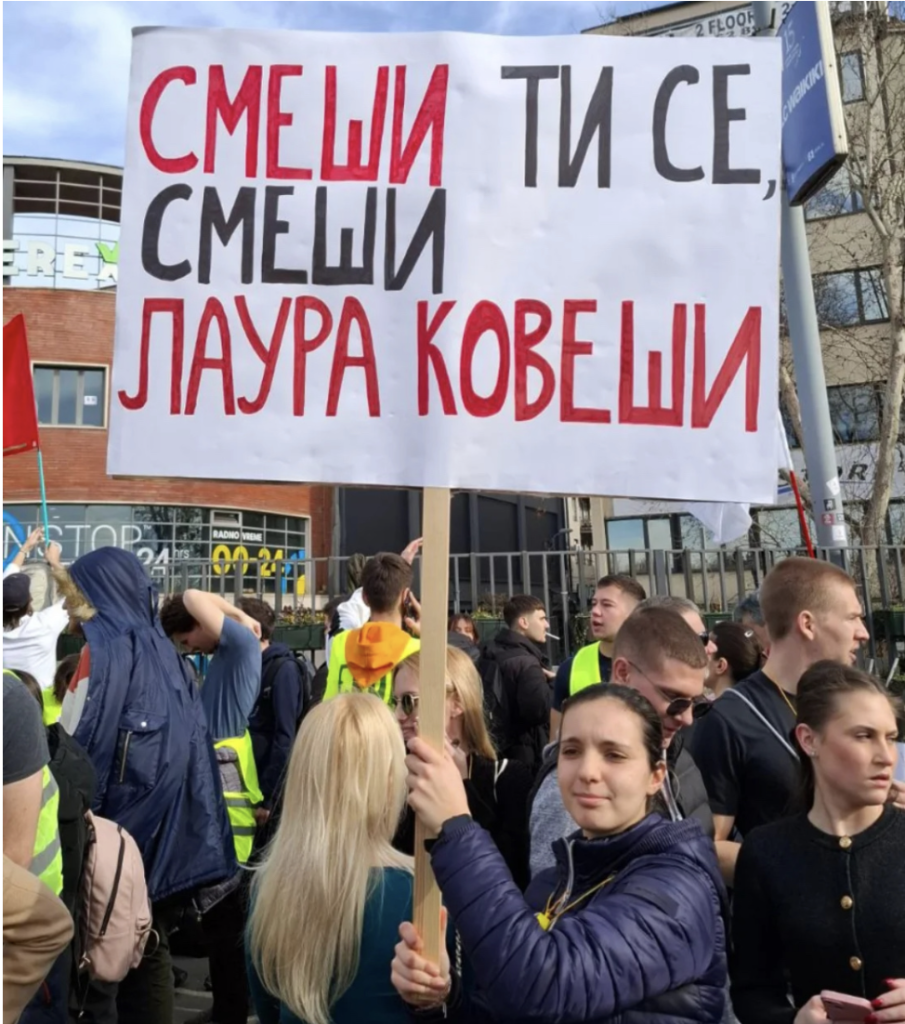
9. Protest Erupts Bringing Thousands To The Streets
The outpouring of grief and frustration brought 25.000 citizens into the streets of Novi Sad, making it Novi Sad’s biggest 21st century protest. They demanded accountability and transparency, and resignations from higher officials, including Mayor of Novi Sad Milan Đurić, President of the National Assembly of Serbia Ana Brnabić, and President of Serbia Aleksandar Vučić. Their motto was: “You Have Blood On Your Hands!”, with protesters painting many of the city’s locations in red paint, leaving red handprints as a stark reminder of the lives lost.
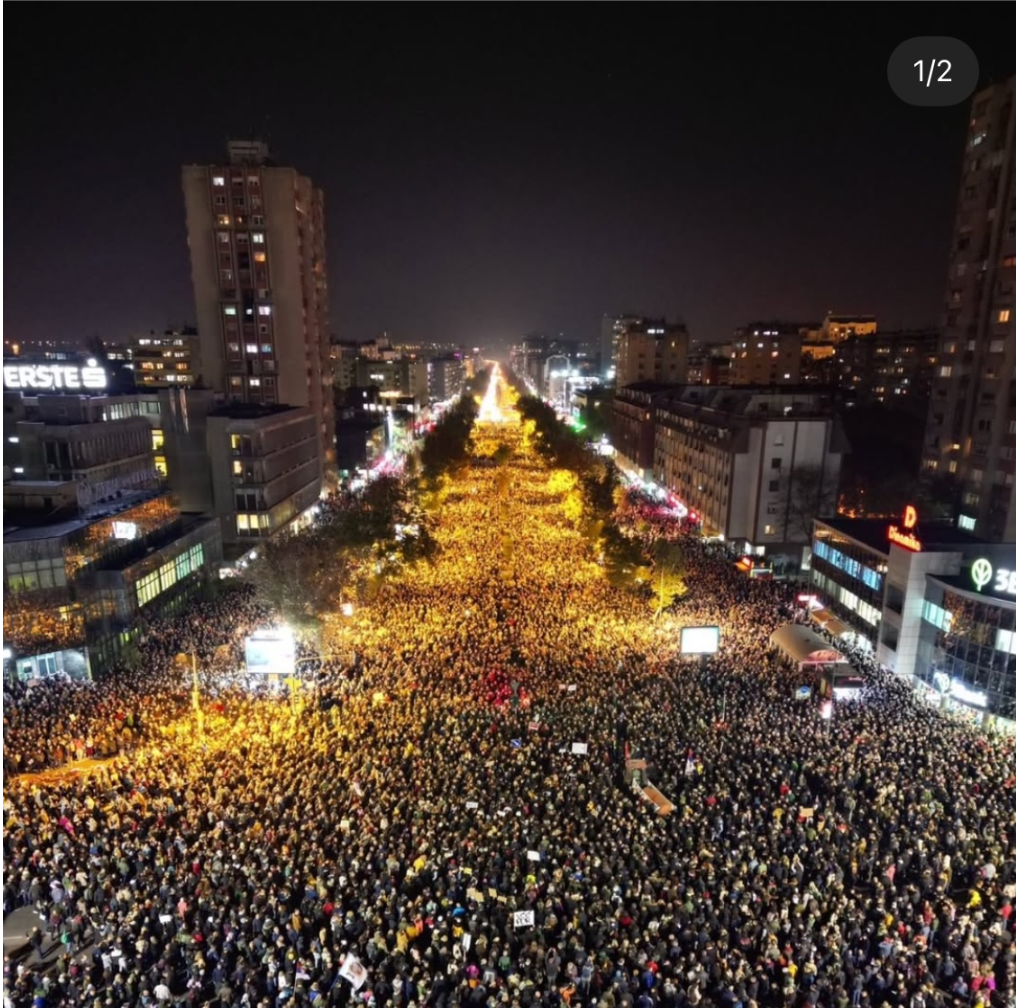
Government’s Authoritarian Response
Their calls for accountability were quickly met with a brutal crackdown. Rather than addressing their concerns, Vučić’s government unleashed alleged police officers in black, unidentifiable uniforms, arresting students, protestors, and former government officials without any warnings or warrants. Eyewitnesses reported that the alleged officers—without any identification and looking and acting like hooligans—forcefully detained citizens, many of whom have since disappeared into custody without charge. Activists allege these detentions are arbitrary, a means of intimidating those who dare to stand against a government they believe has blood on its hands.
“This is not an isolated incident,” remarked one protester, holding a sign that read, “Corruption Kills.” The public’s outcry reflects a deeper mistrust in the government’s ability to enforce safety standards in public projects. Calls for justice are strong, yet many remain skeptical, fearing that without fundamental reforms, justice may be elusive.
Allegedly government-backed hooligans attacked and vandalized the city hall in what many saw as a calculated act of intimidation. The damage was blamed on peaceful protestors, a narrative pushed by state-controlled media. Meanwhile, the president’s allies accused demonstrators of exploiting a national tragedy for political gain, further eroding public trust.
Video footage later allegedly showed these hooligans entering the ruling party’s headquarters after defacing the city hall. Eko Straža identified one of them as a member of the ruling party, a municipal councilor in the town of Kovin, and a librarian.
The hooligans vandalized the city hall for nearly three hours while police calmly observed from inside the building, the ‘Vojvodina’ hotel, and the theater, according to a news channel.
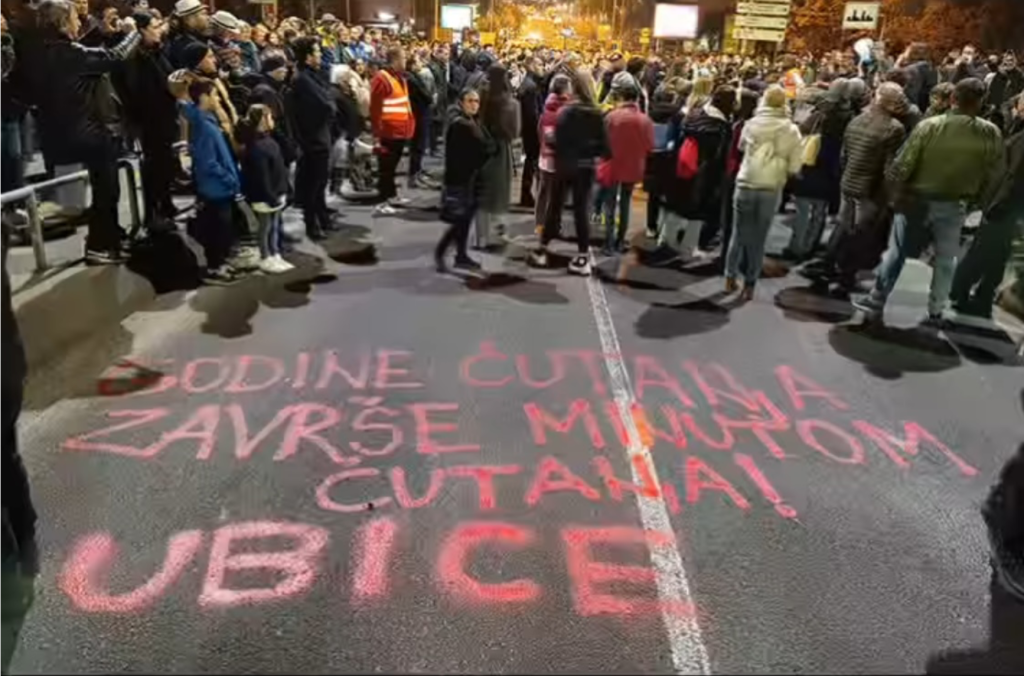
Exaggerated Damage Costs
The swift cleanup of the railway station just hours after the tragedy stands in stark contrast to the authorities’ handling of damage to Novi Sad’s city hall, which had been vandalized during protests. Left untouched for days, the damage was exaggerated in official statements, estimated at €1 million, even though the entire building is estimated to be worth only €1.5 million. This selective treatment points to deliberate efforts to portray protesters as reckless while erasing incriminating evidence from the tragedy.
10. President Vučić’s Late Visit and Ongoing Denial
President Aleksandar Vučić, conspicuously absent in the days after the tragedy, finally arrived in Novi Sad after midnight following the protests, addressing the public not about the lives lost but about the vandalism of his party’s office. The ruling party’s office, defaced with red handprints, was the sole focus of Vučić’s public remarks, where he insulted the protesters and dismissed their demands for transparency, ignoring the tragedy that had devastated families just days before.
Vučić’s comments sparked further anger, with many seeing his delay in visiting as a deliberate choice to avoid facing grieving families and a devastated community. His administration’s focus on controlling the narrative, silencing dissent, and protecting high-level allies over supporting public safety has only fueled the public’s outrage.
A local journalist and editor refuted claims that President Vučić arrived in Novi Sad only after the protests, stating he was present at party headquarters beforehand, coordinating events, with witnesses confirming his presence.
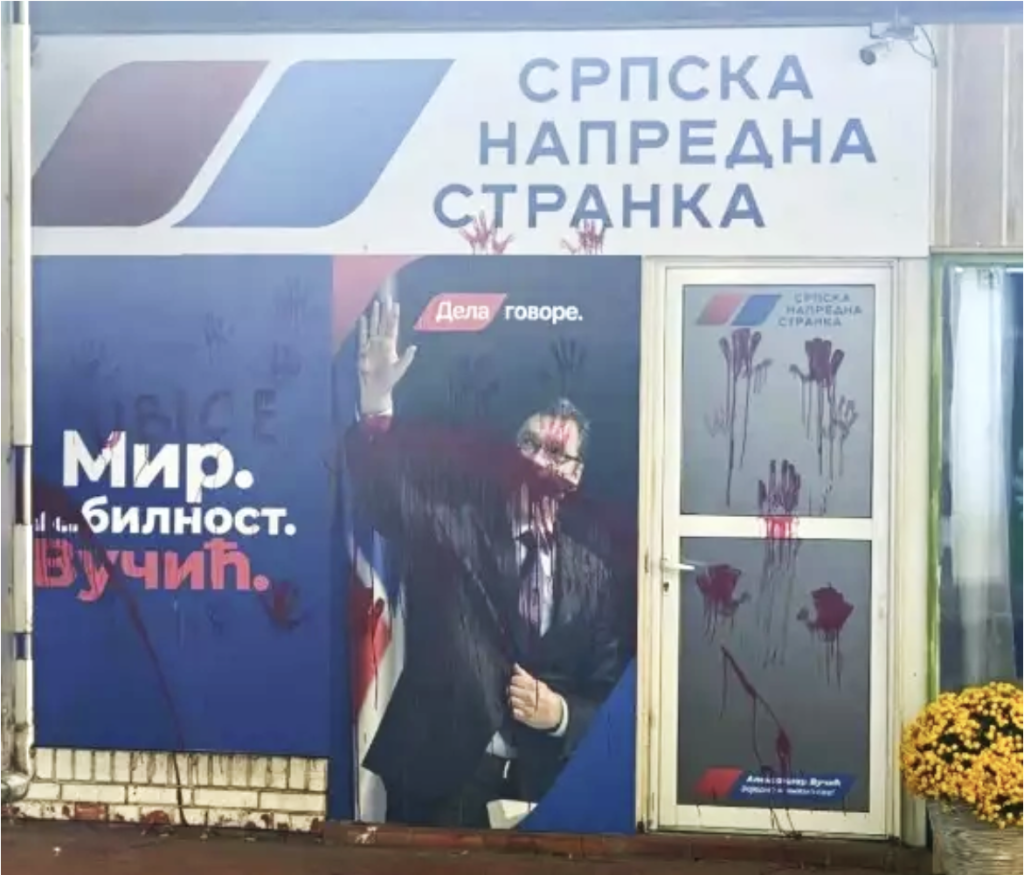
11. Varadin Bridge Blockade: Students + Their Parents
Several hundred citizens gathered on the Varadin bridge around 6pm with a plan to blockade the bridge until midnight. It was a week after the tragedy. Still, no one was held responsible or arrested for the killing of all those people, but 14 activists were arrested.
As three activists who were involved in the organization of the protest reported, on the night of the Varadin bridge blockade, they were violently detained by unknown people in black clothes and taken in black cars against their will. Nobody knew where they were for hours and only after their families reported them kidnapped, they were set free.
As they claim, they were questioned for hours by the people who identified themselves as detectives. They wanted to gain information about future actions and plans involving the protests. Among those three kidnapped people, two were students and one was a member of the City Council.
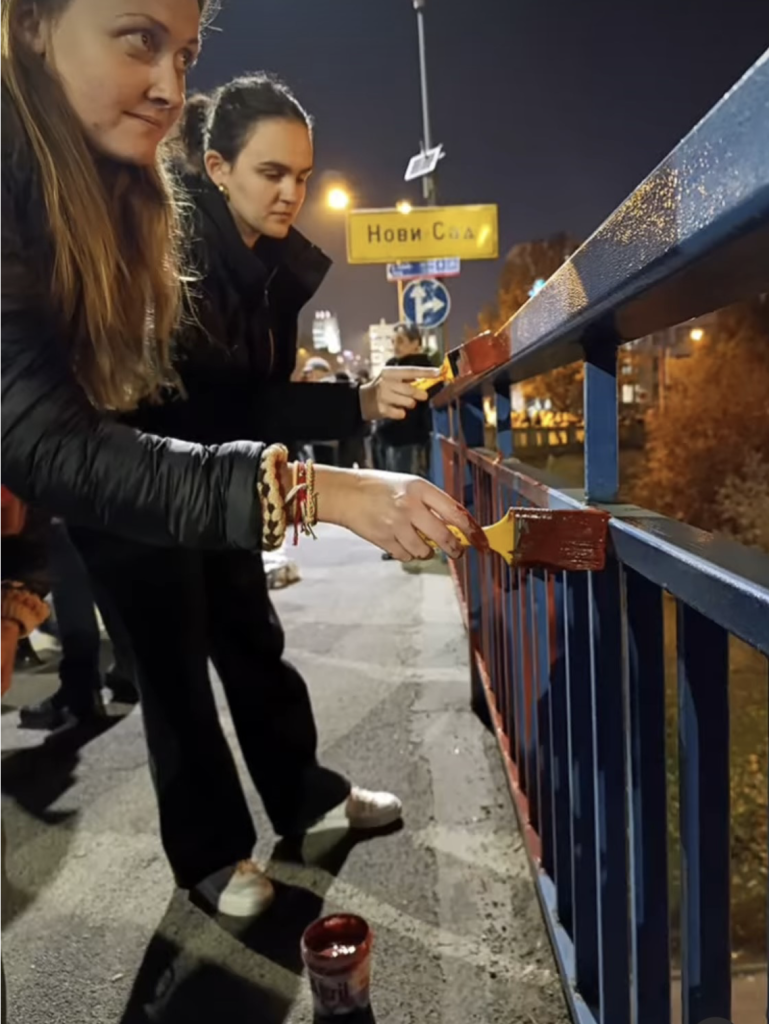
12. 15 Minutes for 15 Lives
Once a week since the tragedy, on Fridays, precisely at 11:52 AM, people in Serbia have spontaneously been gathering to blockade traffic in front of their buildings, offices, schools, at crossroads or wherever they happen to be at the moment. They stand symbolically for 15 minutes to honor the 15 lost lives and demand responsibility, choosing 11:52 because it marks the exact time of the canopy collapse.
The practice has become a habit by now and it has spread to many cities across the country and even diaspora, where everything stops for 15 minutes every Friday at 11.52. Protests spread to many cities and towns, including some that were previously passive for decades, like Aleksandrovac.
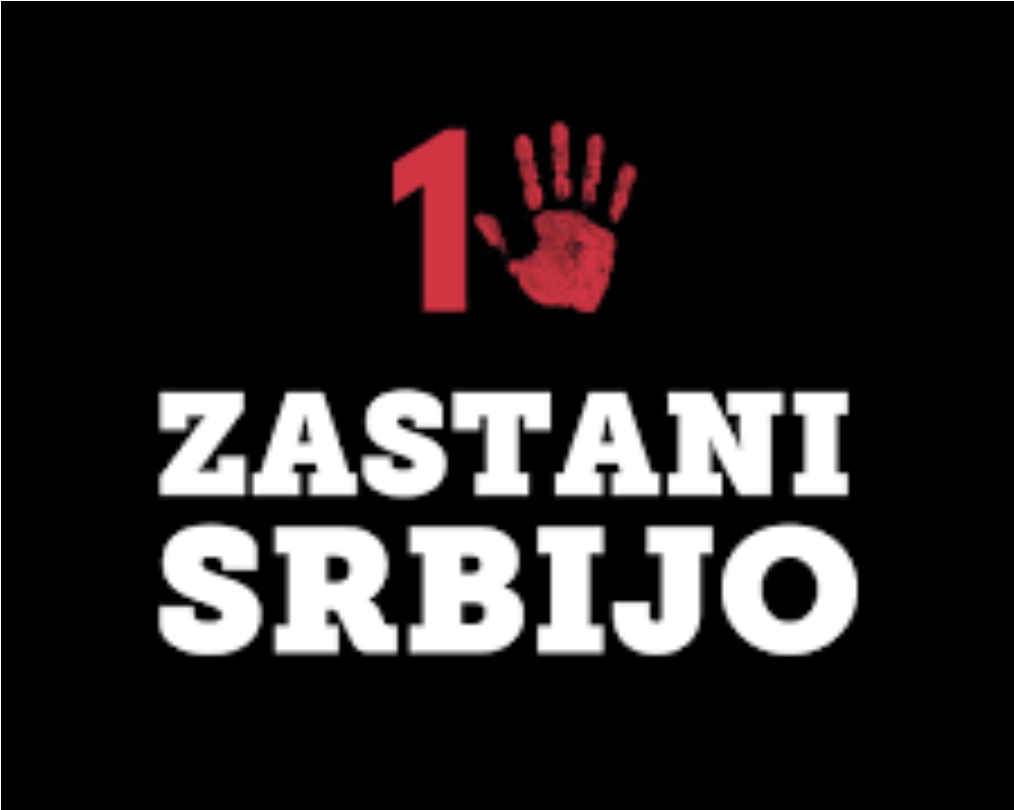
Attacks On Protesters Start
From the very beginning of this practice, government-backed hooligans and members of the ruling party have allegedly been attacking the protesters, insulting them and even tried to kill some of them. The attackers from a serious incident have been identified by a local civic movement.
During the “15 Minutes of Silence” protest in Ruzveltova Street, Belgrade, a driver of a “Ford Focus” station wagon, identified as M.P., severely injured a 20-year-old Law Faculty student. The impact threw her onto the car’s roof. The driver did not stop, causing her to fall off the vehicle before fleeing the scene. Police quickly apprehended M.P. (born 1987), who was arrested and detained. The prosecutor classified the crime as attempted murder and is proceeding with the case.
Lawyer Nikola Lakić stated that Serbian President Aleksandar Vučić bears responsibility for creating an atmosphere of lynching, violence, and lawlessness. Lakić argued that through pro-government tabloids and TV channels, Vučić labeled students as traitors, separatists, and criminals, making such an attack inevitable.
The President of Serbia addressed the incident in Belgrade on his Instagram account, stating:
“The prosecution conducted an investigation, the police gathered all the information, and charges have been filed. Now it is up to the courts to make their decision. Meanwhile, we have witnessed the tragedy being exploited, as usual, by the same political actors who seek power without the will of the people, democracy, or elections. This wouldn’t be a major issue, as it will ultimately be resolved through the democratic expression of the people’s will.”
With chants of “You won’t trample us” and “Everyone to the streets, stand with the students,” the crowd marched through a Belgrade street toward the Higher Public Prosecutor’s Office in Nemanjina. There, they demanded that the driver be prosecuted for attempted murder. This incident has only fueled greater public resistance and spurred the organization of even more protests.
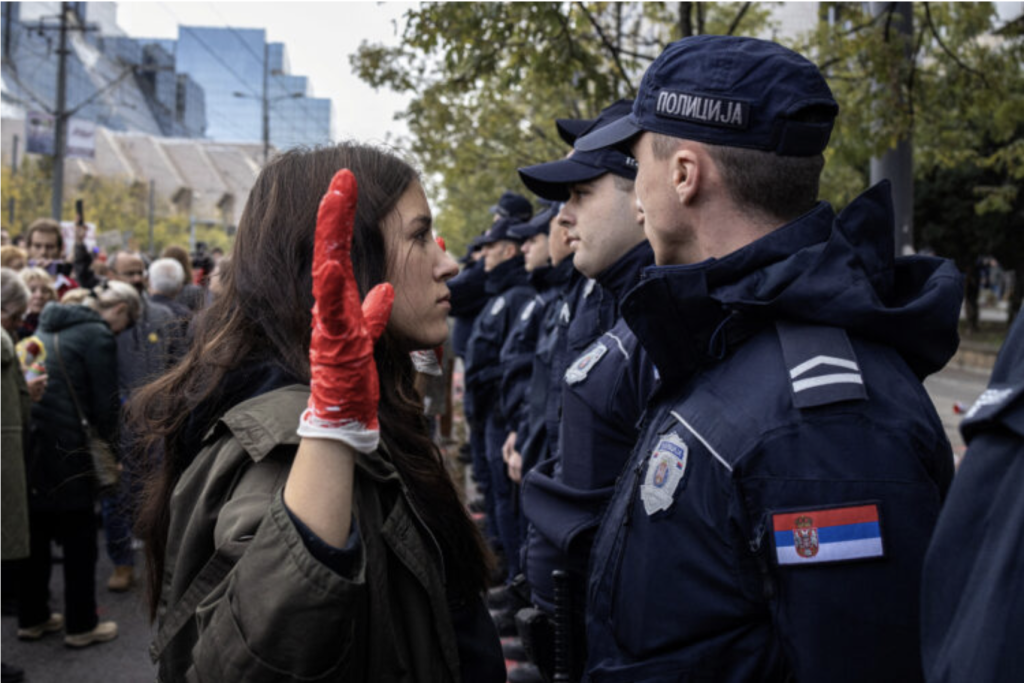
13. Students Take Over the Protests
Following an incident where the ruling party organized a celebration at a faculty in Belgrade exclusively for its student members, blocking other students from entering the faculty premises, just after the death of the 15th victim—a young student who fought hard for a long time but ultimately succumbed to her injuries—students became outraged and decided to take action.
They began blocking streets, then faculties, and universities. By now, most of the universities in Serbia have been blockaded, including 84 state faculties. Students have been living at the faculties for weeks, while their families, friends, teachers and common citizens support them by providing them with food and all other necessities.
School Students Start Joining Protests, President Closes Schools
High school students have also started joining the protests, with more joining each week. Even elementary schools started joining the protests. In response, President Vučić decided to close schools earlier and extend the winter break.
School Students Under Attack
Attacks on protesters continued, including high school students. One man attempted to infiltrate a famous high school in Novi Sad, but the teachers managed to remove him. It was later revealed that the man was a member of the ruling party. Another attack occurred in the city of Šabac, where a man drove his car into high school students, carrying one of them on the hood for some time.
Students have become the leaders of the entire freedom movement, gathering over 100,000 participants at the recent Belgrade protest. They claim they have no intention of negotiating or accepting deals or similar attempts from the government; they simply demand justice and a normal country to live in.

14. Vučić Publicly Threatens Students
During a recent national television appearance, President Aleksandar Vučić made a controversial statement about student blockades, rhetorically asking if he should “insult them, fight them, or call in the ‘Cobras’ to scatter them?”— a comment that caused public concern all around Serbia.
The “Cobras” are a Special Military Police Unit of the Serbian Army, directly under the Chief of the General Staff. Their duties include the security of key individuals and locations, counterterrorism and counterinsurgency operations, and securing high-ranking foreign military delegations. Their emblem features a venomous snake, symbolizing their swift and decisive actions.
While officially tasked with security and defense, the President’s mention of them in the context of students raised questions about their role and appropriateness in domestic civil situations.
Giving The Middle Finger to People and Victims (Literally)
In response to the ongoing protests, which demanded accountability for the railway tragedy, the ruling party introduced a provocative symbol: a red fist with an extended middle finger. This new emblem, which retained the red color from the original symbol of the protests (the red open hand symbolizing the victims’ blood and the demand for justice), was shared by the ruling party’s officials on social media as a counter-response to the demonstrators, stating that it was their reply to the “attempted colored revolution”.
The symbol began appearing in public spaces, including schoolyards, exposing children to its vulgar message. Psychologists expressed concern over its appropriateness, while parents and students intervened by covering the offensive symbols with drawings of flowers and hearts to shield younger audiences from its impact. This move further escalated tensions between the protesters and the ruling party, adding a layer of controversy to an already charged political environment.
15. “Loyalists”: Scare Tactic or Paramilitary Formation?
Just before New Year, president Vučić talked about a group that the opposition calls “hooligans” and said that they are called the “Loyalists” , describing them as people who have their own principles. Vučić stated that within the ruling Serbian Progressive Party (SNS), there is a fraction of “loyalists” who are deeply committed to the party. According to Vučić, this group consists of around 17,000 men, primarily pro-Russian and with somewhat extreme views. He said that they meet in a “small church” and that they swore an oath of blood to the ruling party.
Some members of the public and opposition have interpreted his statement as a threat involving this alleged paramilitary group, aimed at protesters who have been calling for accountability for the incident over the past three months. There are concerns that he may use this group to incite armed violence.
Marinika Tepić, Member of the National Assembly of the Republic of Serbia, expressed concern that neither the Prosecutor’s Office nor Patriarch Porfirije have addressed the reported existence of a paramilitary group loyal to Vučić, ready to use violence against those who oppose his regime. She also questioned the role of certain religious groups in supporting these extremists.
16. BIA Spying on Activists and Families
An investigation by BIRN (Balkan Investigative Reporting Network) and a forensic analysis by Amnesty International revealed that the Serbian Intelligence Agency (BIA) used Israeli Cellebrite technology to unlock the phones of activists summoned or detained for questioning. They then installed the domestic spyware NoviSpy on these devices.
The surveillance went beyond extracting messages and contacts, extending to private photos, tracking family members, and activating cameras and microphones. This is a story told through the accounts of those whose data—and freedom—were taken by BIA.
In recent months, several senior officials, including some of the best and most experienced operatives, have left the BIA. At the same time, the agency is facing criminalization, with convicted individuals being hired into its workforce.
On December 24, students at the Faculty of Law in Novi Sad began a full blockade after professors decided to hold the January exam session, reversing their support for the protests. The next day, BIA agents visited Ivana Stojić, the mother of a protest leader, at her workplace, claiming to resolve the issue of student protests. They said they were instructed by their Belgrade headquarters to question her about the protests and the organizers, which she perceived as intimidation. Ivana remained firm, believing the visit was a threat but that the strong solidarity among students across Serbia would protect them.
17. General Strike and Protests Throughout Serbia
As a culmination of these events, a nationwide general strike took place. Protests and blockades occurred throughout the country, while most businesses closed their doors. However, some elite cafes and restaurants offered free coffee and meals in apparent support of President Vučić.
President Organizes Counter-meeting
On the same day as the countrywide protests, President Vučić organized a counter-meeting in Jagodina to promote a new political party he plans to form. Dozens of buses were seen arriving in Jagodina from various cities. There were numerous reports of people being coerced into attending the Jagodina meeting through work contracts, a practice previously seen in the ruling party’s past events.
Incidents Occur During the General Strike Protests
— Attempted Murder Via Vehicular Assault in Belgrade
In Belgrade, a student was injured in what was initially seen as an attempted murder when a person tried to run her over with a car. The student fell and hit her head on the curb. She was taken to the nearest hospital. The perpetrator was later arrested and detained after the students blocked one of the most important and biggest traffic locations in Belgrade, called Autokomanda, demanding from authorities to act accordingly.
Because of this incident which students saw as a continuum of the violence towards them, students blockaded Autokomanda again two days later, for 24 hours. After a 24-hour blockade, students cleaned the area from the trash and left the location. They went back to their respective faculties, and traffic in this part of Belgrade was once again flowing smoothly.
— Dog Hit-And-Run Murder In Novi Sad
During a protest in Novi Sad, a street dog named Dona was killed by an ambulance driver who drove through the crowd and kept driving without stopping to assist the animal. The president dismissed Dona’s murder as a lie during his speech in Jagodina, saying that the opposition just made up a story about some dog being killed to make them look bad. This made people even angrier and motivated them to continue protesting and demanding justice. The weekly 15-minute silent protests for paying respects to the victims, became 16 minutes long, counting Dona as another victim of the regime. The University Clinical Center admitted guilt and announced that the driver who ran over the street dog Dona, which soon after died, has been suspended and removed from their position. The police and prosecutor’s office have been informed of all the circumstances surrounding the incident and are taking the appropriate measures within their jurisdiction, they added.
— Intimidation Through Animal Cruelty in Novi Sad
Another blockade spontaneously occurred in Novi Sad, after somebody, using a male tie, hanged a murdered white rabbit on an elementary school fence in the morning of January 27th, a school holiday, when children traditionally have a celebration in their school with their teachers and parents. This sparked significant outrage among parents, who firmly stated that they would not tolerate intimidation. Protesters were holding banners with messages such as “We want justice,” “We won’t forgive you the rabbit either,” “Freedom,” and others.
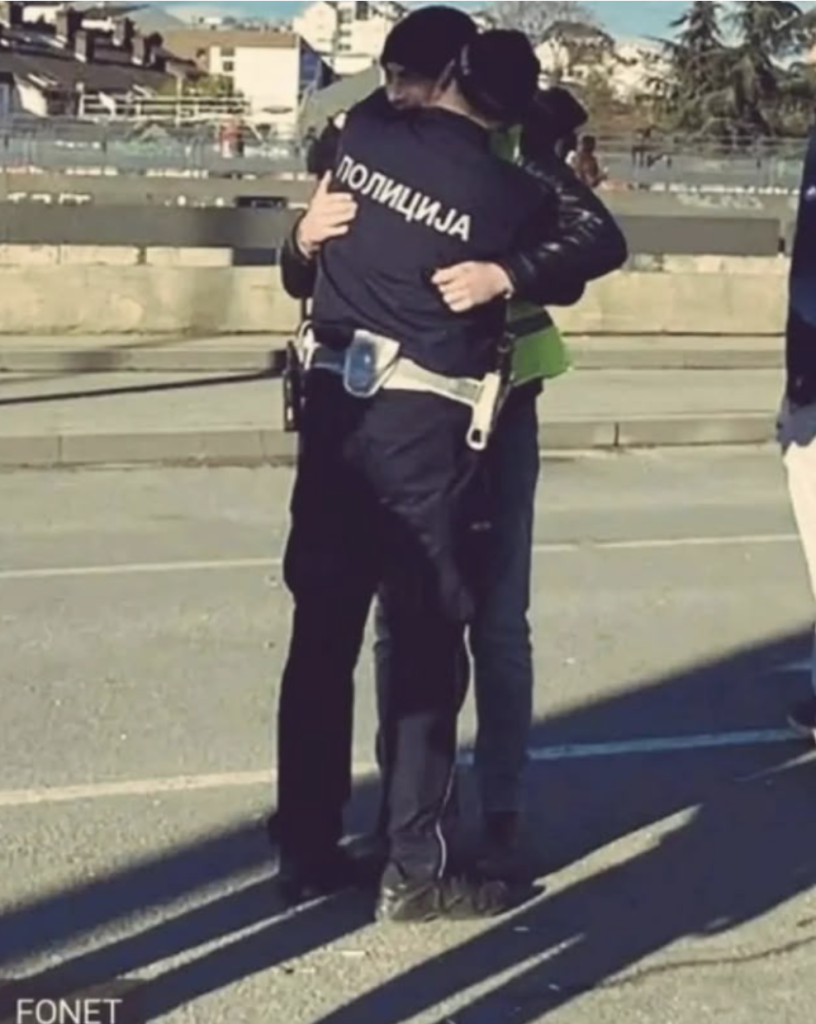
18. Support For Students Keeps Growing
Students have been supported by bikers who joined the protests in Novi Sad, providing security for the events, post office workers, lawyers, teachers, actors, musicians and many other celebrities and common citizens. War veterans have also joined the protests, offering their support and protection. Medical workers have begun protesting as well, further fueling public hope.
Support also came from agricultural workers, who joined the student protests by coming into the city in their tractors and parking them in front of the Faculty of Agriculture, in Belgrade and Novi Sad. They will leave them there as long as they are needed.
19. “3 Bridges For 3 Months” Blockade
On February 1st students will organize a blockade of all three main bridges in Novi Sad, honoring 3 months that have passed since the tragedy. On January 30th students from Belgrade embarked on an 80 km march to Novi Sad to join the bridges’ blockade planned for two days later.
They prepared well, and numerous citizens responded to their call for donations to cover essential travel expenses. Reactions to the column of students marching from Belgrade to Novi Sad are deeply moving—people greet them with food and supplies, hugs, tears, and smiles of hope.
“What an emotional and spiritual cleansing you’ve awakened in us, children.”
“Oh, kids, since the beginning of your protests, I’ve cried both the Danube and the Sava. Love and hugs to all of you.“
“Just when I had almost lost all hope—these wonderful young people appeared… the tears won’t stop.”
“You are all amazing together.“
“How good-hearted our people are… Only now is it truly visible! Thank you.”
These are just some of the comments.
At this point, nearly the entire country is rising in protest, spanning all sectors of society. Many cities, towns, and villages—some with as few as 1,000 residents—are protesting for the first time since 1999. Notably, many of these places had been under SNS control for years.
Even senior and retired citizens, who used to be Vučić’s main voting body, organized a protest to offer their support to the students. People are uniting in the same goal: a wish for freedom and justice.
20. Further resignations
Prime Minister Resigns, Government in Technical Mandate
Serbia’s Prime Minister, Miloš Vučević, who was also the former mayor of Novi Sad, resigned from his position following a series of events that sparked nationwide protests. Vučević’s resignation came after a violent attack in Novi Sad, where a group of men armed with baseball bats assaulted students, leaving a female student severely injured.
The students were placing stickers on a trash can in front of the headquarters of the ruling Serbian Progressive Party (SNS) calling for further blockades, when four men emerged from the building and launched the attack. The most severe injuries were suffered by a student Ana, who endured a dislocated jaw, broken in three places and damaged teeth, as they hit her in the face with bats.
Four SNS activists have been arrested in connection with this incident. One of the arrested individuals was involved in the violent blockade of the Faculty of Philosophy in late March 2023.
“I will perform my duties until a new prime minister is appointed. At this moment, the entire government is in a technical mandate, and with the resignation of the prime minister, the whole cabinet falls. Figuratively, practically, the entire government is in resignation. We will continue to do our jobs professionally and responsibly until the election of a new government or until another political decision is made,” Vučević said at a press conference.
Mayor of Novi Sad Also Resigns
Milan Đurić has also submitted his irrevocable resignation from the position of Mayor of Novi Sad. “As a responsible man and politician, I am submitting my irrevocable resignation as Mayor of Novi Sad. Stability, calming tensions, and preventing further divisions in society are key conditions for the further progress and development of Novi Sad and the improvement of the lives of its citizens,” he stated.
Students Reply: It’s Not Enough!
Students in Novi Sad emphasize that their demands have not been fully met. Although the resignations of Prime Minister Miloš Vučević and Novi Sad Mayor Milan Đurić were part of their requests, students argue that this is not enough, especially after the events leading to the resignations.
One student commented: “We watched the resignation speech together, and while it’s good news, it came three months too late. I’m glad Vučević recognized his responsibility, but this announcement was delayed. Half of our demands have been met, but the rest remain unanswered.”
She further stated that students do not feel safe and doubts that the political climate will improve after the resignations.
“This cannot continue like this. They beat us in the streets, and then he resigns. I don’t think this will lead to stabilization. One person resigning in Belgrade means nothing if we are being beaten here in Novi Sad,” the student said.
21. EU Commission Seeks Reports on Student Attacks
Serbian prosecutors in Belgrade were required to report on the progress of cases against attackers targeting students involved in protests following the Novi Sad railway station collapse. The European Commission has also requested data on all 2024 protests in Serbia, including those against electoral fraud, environmental issues, the demolition of the Old Sava Bridge, and teacher strikes.
22. Government’s Attempts to Bribe the Students
Better Conditions For Apartment Purchase
Since the president suddenly announced improved conditions for Serbian students to purchase apartments, several questions have been raised by the students regarding this move. This only made the students more determined to keep going.
President Calls For Discussion Regarding Students’ Demands
President Vučić invited the students for a discussion about their demands, to which the students had a fantastic response — “Nisi nadležan.” (You have no authority (over it)). “Who asked you anything?” This was the students’ response to invitations for dialogue from President Aleksandar Vučić. They explained that their demands were directed at the relevant institutions, and they expect answers from them, not the president. As such, they see no reason to respond to these invitations.
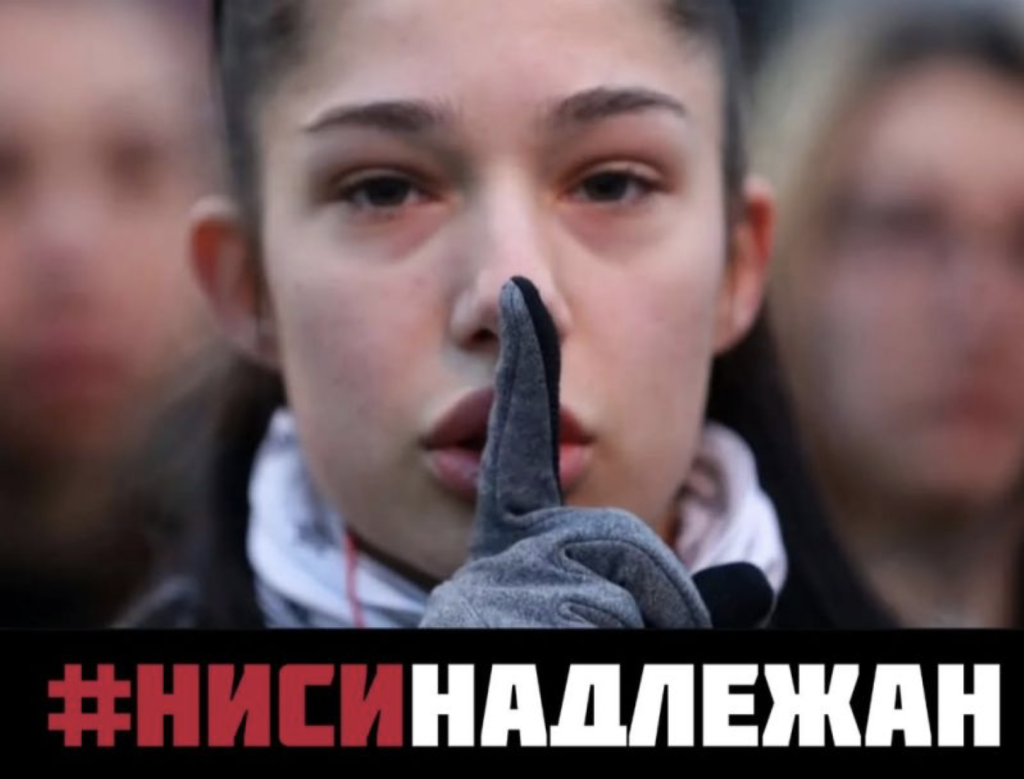
These young intellectuals have essentially “reset” the president to factory settings, stating that they will not engage in discussions with those who do not have competence and authority, and he does not. His powers are mostly ceremonial.
The students believe that the regime, along with its figurehead Aleksandar Vučić, likely finds it unusual that they are not “falling for” the usual tricks. They emphasized that the regime has no response to such an authentic and principled stance from the students.
“That invitation was not of interest to us because our demands were not addressed to the president but to the institutions responsible for these matters. We will not change our position until all demands are met. The president of the republic does not have the authority in this case,” one student emphasized.
The students asked, “Where are the remaining 600 or so documents out of the 857 that exist? Where are the contracts with foreign companies? We don’t see any specific documentation about the canopy itself. We said the fight for justice has begun and will continue.”
Tuition Cuts
In an apparent move to sway public opinion amidst ongoing protests, the Serbian government has promised financial relief to students by drastically reducing tuition fees, a move some see as an attempt to placate the younger generation. Serbia’s Deputy Prime Minister and Minister of Finance, Siniša Mali, announced that an additional 12.01 billion dinars have been allocated for higher education. He emphasized that this funding will allow for a 50% reduction in student tuition fees.
Pardoning Individuals Arrested During Protests
Serbian President Aleksandar Vučić has reluctantly offered pardons to 13 individuals arrested during and after the November 5 protests in Novi Sad. This offer was seen as an attempt to fulfill the third demand of the protesters, which called for the dismissal of criminal charges against those detained. The offer came on the day of the march towards Novi Sad.
While the pardons were forwarded to the Ministry of Justice, many of the affected individuals, including students, professors, and activists, have rejected the offer. Critics, including lawyers and the detained individuals themselves, argue that the offer undermines their cause and acts as a political maneuver rather than a genuine act of mercy. Some believe that Vučić is using this gesture to defuse tensions, while others accuse him of manipulating the situation to maintain political control.
“The innocent do not accept pardon.” These individuals argue that they should not be treated as criminals and that the charges against them are politically motivated.
Students Demand Action From Public Prosecutor
A thousand letters were delivered by students to the Republic’s public prosecutor Zagorka Dolovac at her workplace at the end of December, reminding her of what she had sworn to three times. They are demanding that she fulfill their requests, as it falls within her jurisdiction. They succeeded in something that has eluded many over the past 14 years: establishing some form of communication with Dolovac.
The prosecutor previously offered the students the option to select 5-6 delegates to enter the building, but the students responded that there would be no negotiations, and fulfilling their demands would be sufficient. Another detail: employees in the building housing numerous ministries greeted the students from the windows.
Dolovac repeated her call for a conversation with student representatives, on the day of students’ embarking on the 80km march to Novi Sad, stating that three of their demands have been met and that the financial aspects of the reconstruction of the railway station canopy in Novi Sad are being thoroughly examined. However, the reasons for the ongoing investigation currently prevent her from disclosing any details.
“We apologize if the public believes that the responses to certain events were delayed. The public prosecution must recognize this as constructive criticism and accept the feedback, ensuring that timely and accurate information is provided regarding the involvement of all available prosecutorial resources,” emphasized Dolovac.
23. Serbian Students Nominated for Nobel Peace Prize
Students from Serbia have officially been listed as candidates for this year’s Nobel Peace Prize. Their nomination, submitted just before the deadline, was supported by playwright Siniša Kovačević and lawyer Dijana Stojković, and it was swiftly confirmed by the Nobel Committee.
The nonviolent student movement is vital for Serbia’s future, national dignity, and regional stability. Winning the Nobel Peace Prize would not only hasten the fall of the last dictatorship in Europe but also inspire young people to take an active role in shaping a peaceful and just society.
After completing the march from Belgrade to Novi Sad on January 31st, thousands of citizens welcomed the students like they were already Nobel laureates.
24. Scandalous Statements From the Ruling Politicians
“It seems that the opposition’s problem is that more people didn’t lose their lives at the railway station in Novi Sad.” – Ana Brnabić, President of the National Assembly of Serbia
“You cannot overthrow the government because of the 15 people who died. Not because of 155, not because of 1555. Serbia cannot be stopped just because we had a tragedy. And like parrots, they keep repeating: 15 people died, so we must bring everything down.” – Miloš Vučević, Prime Minister of Serbia
“Children are the property of the state.” – Vladimir Đukanović, a lawyer and a Member of the Parliament for the ruling party
“Should I insult them, fight them, or call in the ‘Cobras’ to scatter them?” (referring to student protesters) – Aleksandar Vučić, President of Serbia
25. Conclusion: Calls for Justice Amidst a Climate of Fear
The Novi Sad disaster has intensified calls for accountability in Serbia’s infrastructure and governance. Though the government’s actions offer little immediate change, the persistent push for justice hopefully may ultimately lead to reform. The country’s reliance on foreign contractors, combined with restricted access to project documents and a lack of independent safety checks, leaves citizens vulnerable to further tragedy. The collapse, along with mounting concerns over unsafe projects in Belgrade and Subotica, underscores a broken system that prioritizes profits and political alliances over human lives.
The Serbian people continue to demand justice and transparency, risking arrest, injury and intimidation to make their voices heard. Families of the deceased are left grieving, betrayed by a system that shields those responsible through political privilege. For now, the Novi Sad tragedy stands as a grim reminder of a system that values power over accountability, leaving citizens wondering when—or if—justice will come.
As one of Serbia’s greatest talents—writer, poet, musician, and spiritual leader Đorđe Balašević—eloquently put it in his song “Ne lomite mi bagrenje” (Don’t Break My Locust Trees): “There wouldn’t have been this bloodshed if everything had been done according to the law.” His words are a plea for justice, echoing the desire to protect what is sacred from reckless destruction.
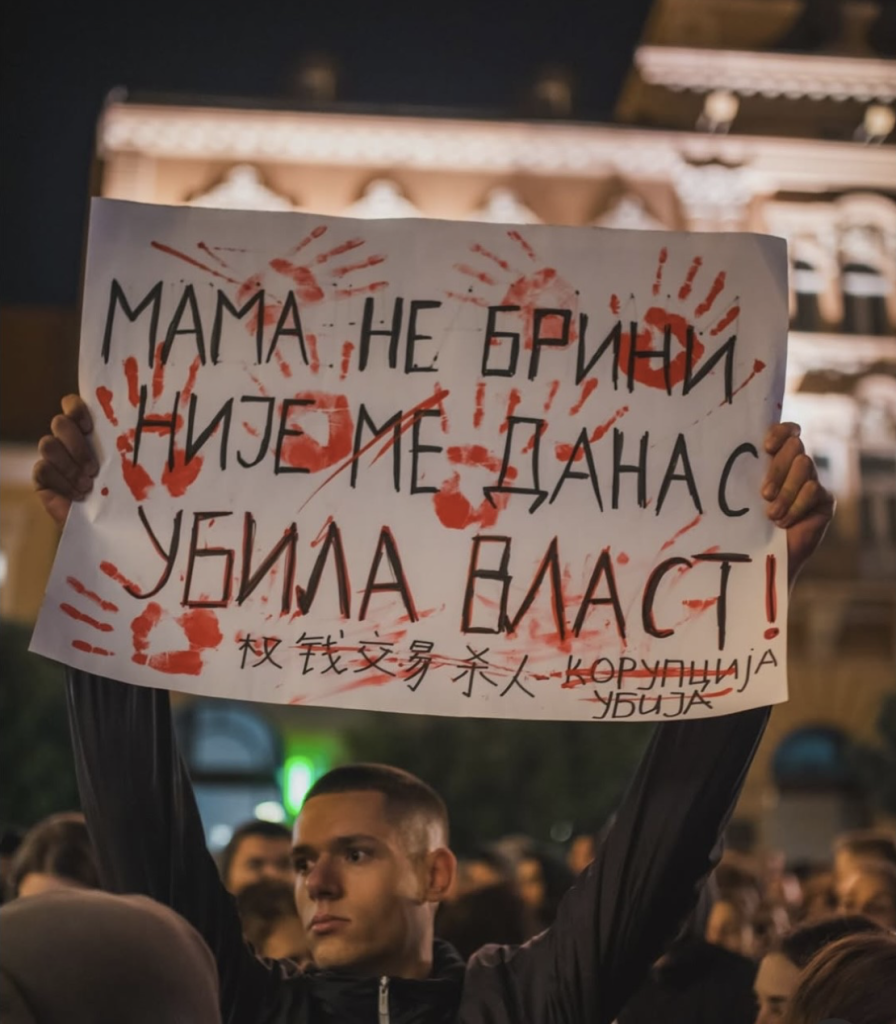
Write and publish your own article on Euro Prospects
Subscribe to our newsletter – stay informed when we publish articles on pressing European affairs.
